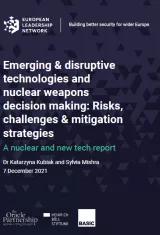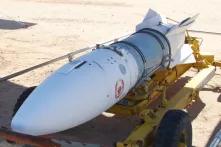There is a significant number of bilateral and multilateral treaties in the field of arms control, disarmament and nuclear non-proliferation. A short description of the most relevant treaties can be found here.
The nuclear age began with the first nuclear test in New Mexico on July 16, 1945. Since that date, about three dozen countries around the world have shown interest in nuclear weapons. At the same time, however, there were comprehensive international initiatives to curb the proliferation of nuclear weapons, to reduce existing arsenals and to restrict nuclear testing.
The main nuclear arms control treaties reflecting these efforts are:
- The Nuclear Non-Proliferation Treaty, NPT. The NPT entered into force in 1970 and consists of three pillars:
- The non-proliferation of nuclear weapons beyond the five nuclear-weapon states USA, Russia, France, UK and China. These five countries were the only nuclear powers at the time the NPT was negotiated.
- The right to the peaceful use of nuclear energy for all NPT state parties.
- The commitment of all nuclear-weapon states to nuclear disarmament (although without a specific time target)
- The Treaty on the Prohibition of Nuclear Weapons, TPNW, often referred to as Nuclear Ban Treaty) from 2021. It prohibits all state parties from owning, developing and transferring nuclear weapons. 68 states have ratified the treaty so far. However, none of the nuclear powers joined the TPNW (as of August 2023).
- The Comprehensive Nuclear Test Ban Treaty, CTBT, from 1996. It bans all state parties from carrying out nuclear tests above or below ground. Only France, the United Kingdom and Russia, as nuclear powers, have ratified this treaty. Most nuclear powers, however, adhere to a test moratorium in the 21st century, with the exception of North Korea.
- The New START treaty of 2010. In this treaty, the USA and Russia agreed on upper limits for their long-range nuclear systems. Russia has not complied with its treaty obligations since 2023.
- The Intermediate Range Nuclear Forces Treaty, INF, from 1987. In this treaty, the USA and Russia agreed not to use ground-based intermediate-range nuclear systems. Russia and the US terminated the treaty in 2019.
The following countries own nuclear weapons today: USA, Russia, France, UK, China, Israel, India, Pakistan and North Korea.
As part of NATO's nuclear sharing, US nuclear weapons are stationed in the following countries: Germany, Italy, the Netherlands, Belgium and Turkey.
Since 2023, it is also likely that Russia has stationed tactical nuclear weapons in Belarus.
In addition to the nuclear arms control treaties mentioned above, there are a number of other treaties on conventional and humanitarian arms control. The most important treaties of conventional arms control - such as the Treaty on Conventional Armed Forces in Europe (CFE), the Vienna Document and the Treaty on Open Skies - have lost their effectiveness due to the crisis between Russia and NATO, and are no longer implemented for the most part.
The situation is different with the two central treaties on humanitarian arms control: the campaigns to ban anti-personnel mines (Ottawa Convention) and cluster munitions (Oslo Convention) have persuaded many states to join the respective ban treaties. As with the TPNW, however, the support of big powers and many middle powers for the Ottawa Convention and the Oslo Convention is deficient.


